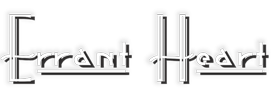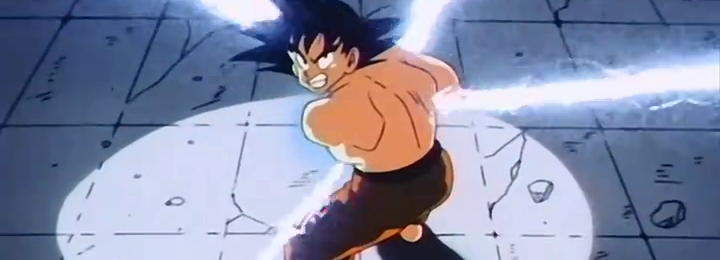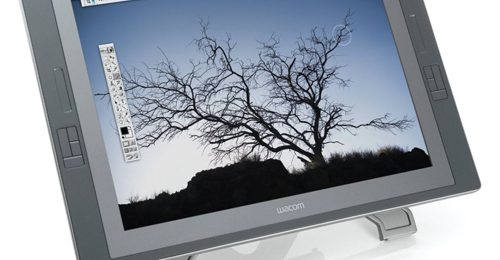The Kamehameha Effect
Some random observations I’ve recently identified in regards to working on a Visual Novel project…
Having worked with 3D modeling and animation in the past, Visual Novels seem very similar in the effort required up front, and the reusability of the art resources. But the most interesting aspect that I’ve found is the Kamehameha Effect.
As far as effort is concerned – Oy! It seems like such a long, difficult, never-ending process. But I suspect that completion for resources will proceed in a logarithmic fashion. So it’ll seem like very little progress is being made for a long time. And then all of a sudden, without warning, everything will be done. Oh, I’m waiting for that day.?
As far as reusability is concerned, it’s definitely a nice change of pace from doing comics. With sequential art, one really can’t reuse anything one draws. Oh sure, one might occasionally be able to swipe a panel here or there from some random, previously finished page. And there are instances where a panel needs to be repeated (usually for comedic effect). But those are rare instances that are far and few between.
But the best part of working on Visual Novels? The fact that one can concentrate one’s efforts onto such a small set of resources. Or as I like to call it: The Kamehameha Effect.
Basically, with sequential art, one has to be fast – damn fast. The pages have to be churned out as fast as one can physically stand (sometimes, beyond). Consequently, quality is usually not a high priority. So, while sequential art may highlight a person’s absolute speed and reliability, it doesn’t necessarily give one a chance to shine, as far as quality is concerned. And that’s something I’ve sorely missed over the years – the chance to concentrate and obsess over a “small” set of artistic resources.
Although, this process does highlight the fact that most of my skills are based around speed. I sometimes find myself at a loss when I need to add in gobs of detail on something. But hey – just like most things, I’m sure it’ll come in time. Maybe. Hopefully…
I am the Light-bringer
So I thought you might like to know a little bit about what exactly I do on this project.
Well, my primary focus is the writing. I handle the planning for the branches, the plot/story, the dialog, character development, etc. I’ll be honest when I say that I’ve never taken on such a large writing task before. And I have an unfortunate habit of losing all interest in something once I work out all the details in my mind – which is usually LONG before everything is committed to paper. However, I believe I’ve hit upon a useful strategy for keeping my interest while writing and enhancing the results I end up with.
Anyway, the primary point of making this post was to illustrate my other key contribution to the project: the sprites.
The lead artist does the character design and pencils for the sprites. Below is an example of what I get from the artist:
Once I have that, I ink it and lay down the final line work:
And once I have that, I put down a layer of shadows on the sprite – which then goes back to the lead artist for CGing. The shadow layer is there to help speed along the CGing process. That process is still developing, however. As such, the first batch of “shadowed” sprites that I returned ended up being…not helpful enough. In essence, what I provided represented a layer of ambient shadows. The sprites still needed an additional layer of shadows – hard shadows cast by objects. That secondary layer of shadows is illustrated in the sample below:
What does the finished product look like? That’s an excellent-good question.
Of Strathmore and Cintiqs
I swore I wouldn’t put anything in this blog until Errant Heart is officially unveiled. But, I’ve happened across something that I think would make for good blogging fodder so before I forget…
First, you need to know a little about me. I’m an inker and toner. It’s what I’ve been doing, almost exclusively, for years in my quasi-professional artistic career. I probably have somewhere around 800-or-so inked pages under my belt. As such, I’ve used a variety of tools, like Microns, dip pens and tablets. And I’ve used a variety of different paper – card stock, bristol, papers of varying weights, etc. Some artists say that paper doesn’t matter – inking on a cocktail napkin is sufficient. Well, yes, perhaps it is after a certain number of Martinis. But I can tell the difference in papers. Heck, I can spot the difference in different batches of the same brand of paper. As such, I’m pretty finicky about what I use.
Enter the Cintiq.
For years, I’ve lusted after the Wacom Cintiq. It seemed like a wonderful tool – drawing directly on your monitor?! Sign me up! However, I started having misgivings about the concept after getting my first Graphire. Oh don’t get me wrong – I found it useful. But only for a few, very specific tasks related to digital toning techniques. When it came to working digitally, the mouse was good enough for me.
But, as luck would have it, I eventually stumbled onto a good deal on a used Cintiq. I hesitated, but eventually caved and got one. I don’t mind saying that I was pretty intimidated by the thing. Even used, it costs a small fortune. And it was awfully overwhelming in stature as it sat on my desk – mocking me, daring me to use it.
Oh sure, as a monitor it’s very good. But I needed to start using the thing as it was intended, lest I feel like an idiot for dropping so much cash on a tool that I would never use. Recalling the awkwardness of the Graphire, I reluctantly tested the Cintiq out. Kicked the tires, if you will. Not bad. Not bad…
And then, like a sweaty fat kid on a hot day who hems and haws about jumping into a cold swimming pool after dipping his toe in, I was suddenly pushed into the deep end. And wouldn’t you know it? I could swim!
All my fears about awkwardness, or lack of “texture” on the surface of the Cintiq, or worries about my lines turning out shaky, or inability to make long, smooth, flowy lines evaporated. After just one intense session with the thing, I can honestly say I never, EVER want to touch the mouse for even the smallest of graphical functions again. It’s like trying to draw with a potato. Yeah, it can be done. But why?
Furthermore – with the Cintiq I find that I have far more control over my lines. That’s not to say that it’s necessarily better than using physical inking techniques. Rather, by going all-digital, any “signal degradation” that crops up in the process of physically inking something disappears.
Normally, my process would involve printing out pencils (usually on two separate pieces of 8.5×11 and taped together) and affixing it to some 400 series Strathmore. Then I’d put it on the lightbox and ink it. After that, I’d scan it in and clean it up. As you might be able to tell, there’s a lot of setup work. And errors are introduced at every step – the printouts aren’t perfect. The printouts get obscured by the Strathmore (so I can’t see all the fine details). The scanner doesn’t pick up every detail. But with the Cintiq? No such problems exist.
So in the end, if you’re a sweaty little fat kid, worried about diving into a cold pool – just do it.






